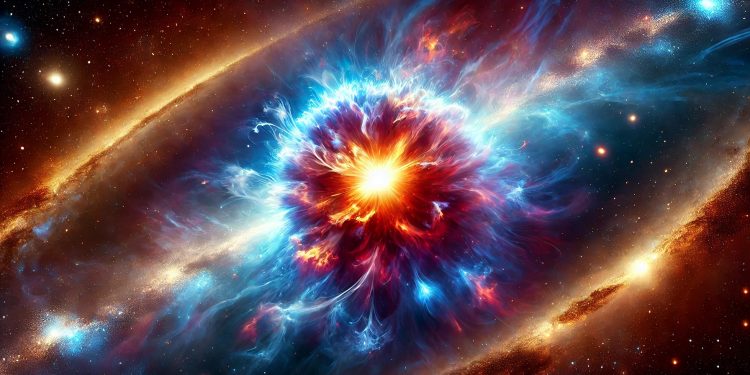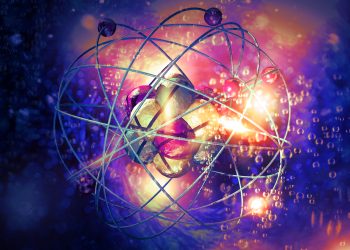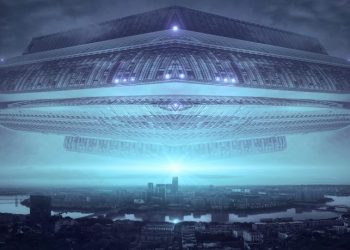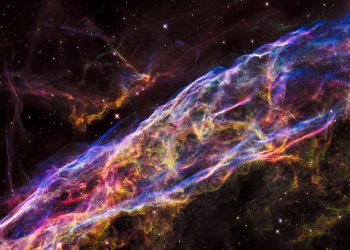Humanity’s fascination with the universe’s origins has spanned millennia, with our ancestors gazing into the night sky, marveling at the mysteries of the cosmos. From the earliest days of recorded history, civilizations around the world have sought to understand the universe’s beginnings, often weaving celestial phenomena into their myths, religions, and cultural narratives. The stars were not only sources of wonder but also seen as divine or mystical, shaping the beliefs of ancient peoples like the Egyptians, Greeks, Mayans, and countless others. These early interpretations often attributed the creation of the universe to the gods—cosmic acts of creation tied to spiritual or supernatural forces. For centuries, questions about the universe’s origins were beyond the realm of empirical investigation, shrouded in mysticism and philosophical thought.
Fast forward to the modern era, where science has replaced myth with evidence-based explanations, enabling us to peel back the layers of mystery and approach the universe’s origins through a more methodical lens. With advances in technology, observation tools like the Hubble Space Telescope and the James Webb Space Telescope and particle accelerators have allowed us to gather data that paints a clearer picture of how the universe may have formed. These modern insights stand on the shoulders of centuries of human curiosity, blending ancient wonder with cutting-edge science to offer a clearer understanding of our cosmic beginnings. Yet, even as we gain knowledge, the universe’s deepest mysteries continue to elude complete understanding, keeping our collective fascination alive.
From the widely accepted Big Bang Theory—which provides the most robust and well-supported explanation—to more speculative ideas like the multiverse and the simulation hypothesis, these concepts push the boundaries of what we know. However, before delving into these ideas, it’s essential to understand their place in the broader context of scientific discovery, which is constantly in flux. Each new technological advancement, whether in astronomy, physics, or computer science, adds a new layer to our understanding, helping refine or even challenge existing theories. What we accept as fact today may evolve as future generations unlock new tools and methodologies for probing the deepest mysteries of the cosmos.
The Big Bang Theory: A Universe in Motion?
The Big Bang Theory remains the most widely accepted explanation for the universe’s origins. First proposed by Belgian priest and physicist Georges Lemaître in the 1920s, this theory suggests that the universe began as an infinitely small singularity, which rapidly expanded around 13.8 billion years ago.
Over time, the universe cooled, leading to the formation of particles, atoms, stars, and galaxies. A cornerstone of modern cosmology, the Big Bang is supported by several key observations, including the cosmic microwave background radiation and the expansion of the universe as demonstrated by Hubble’s Law.
Key Assumptions Behind the Big Bang
- Universal Laws are Constant: Fundamental forces such as gravity, electromagnetism, and the speed of light behave uniformly across the cosmos, allowing scientists to model the universe with reliable accuracy.
- Homogeneity: On large scales, the universe is uniform in composition and structure. Although regions may vary, the overall distribution of matter remains consistent.
- No Center: The universe is not centered around Earth or any specific point. It’s expanding uniformly, meaning all points in the universe are moving away from each other.
- Finite Beginning: The universe had a definitive start. All matter and energy that exists today were created during the Big Bang, and no new material has been spontaneously generated since.
A Timeline of the Big Bang
- 1 Second: Just one second after the Big Bang, the universe’s temperature reached a staggering 5.5 billion degrees Celsius. At this point, light was scattered by free electrons, making it impossible to see anything.
- 3 Seconds: Subatomic particles—neutrons, protons, and electrons—formed the first atoms, primarily hydrogen and helium.
- 380,000 Years: For the first time, light emerged, resulting in the cosmic microwave background. This radiation still lingers in the universe today and offers crucial insights into its age and structure.
- 300 Million Years: As gases continued to spread, gravity began to pull matter together, forming stars and galaxies.
- ~9 Billion Years: Our Sun was born, and the solar system took shape. The universe, now about 14 billion years old, continues to expand and evolve.
The Steady State Hypothesis: An Eternal Universe
In contrast to the Big Bang, the Steady State Theory posits that the universe has no beginning or end. Proposed by British physicist Sir James Jeans in the 1920s, this theory suggests that matter is continuously created as the universe expands, maintaining a constant density. However, significant evidence, including the discovery of cosmic background radiation, has discredited this theory.
The Multiverse: Multiple Realities?
One of the most intriguing—and admittedly mind-bending—theories in modern cosmology is the concept of the multiverse. This theory posits that our universe, vast and incomprehensible as it may seem, could be just one of an infinite number of universes. Each of these universes might operate under its own set of physical laws, making them entirely different from our own. For instance, in another universe, the force of gravity could be weaker or stronger, or the speed of light might vary dramatically from what we know. Such differences would fundamentally alter everything—from the formation of stars and planets to the possibility of life.
The driving force behind the multiverse theory stems from the idea that our universe seems almost “too perfect” for life to exist. The fundamental constants of nature—things like the strength of gravity, the charge of electrons, and the properties of atomic particles—appear fine-tuned in such a way that life as we know it is possible. This uncanny precision has led some scientists to wonder whether this fine-tuning is just a remarkable coincidence, or if it’s the inevitable result of an infinite number of universes. In such a scenario, it’s only natural that one or a few universes would have the right conditions for life, and we just happen to live in one of them.
While the multiverse remains a speculative idea without direct evidence, it challenges the long-held assumption that our universe is the only one in existence. It opens up the possibility that there are other realities, each with its own rules, and perhaps even its own versions of life—though they might be nothing like what we can imagine. The sheer vastness and diversity of this concept make it one of the most exciting, if not perplexing, topics in cosmology. Although we may never be able to visit or observe these other universes, the very idea pushes us to rethink our place in the cosmos and what “reality” truly means.
Simulation Hypothesis: Are We Living Inside a … Computer?
The Simulation Hypothesis has become a topic of serious debate in recent years, fueled by breakthroughs in quantum physics and computer science. It is, admittedly, one of my favorites.
What once seemed like pure science fiction—living in a computer-generated reality—has now found its way into philosophical and scientific discussions. Prominent thinkers like philosopher Nick Bostrom have put forward the idea that our entire reality could be an incredibly advanced digital simulation, crafted by a far more developed civilization. In essence, everything we experience—the universe, Earth, even our own consciousness—could be part of a massive computational program.
This theory may sound far-fetched at first, but it raises profound questions about the nature of existence. If future civilizations have the technological ability to simulate entire worlds or universes, there’s no reason to believe we couldn’t be part of one such simulation. It challenges our understanding of what is “real” and forces us to consider whether everything we see and experience is simply a hyper-realistic simulation with its own set of rules.
The implications are staggering. If we are living in a simulation, what does that say about free will, consciousness, and the meaning of life itself? Are we simply characters in a vast digital game? While there’s currently no concrete evidence to prove or disprove the Simulation Hypothesis, it has captivated the imaginations of both scientists and philosophers alike. The idea forces us to look beyond our perceived reality and ask some of the most fundamental questions about who we are and what it means to exist. Though speculative, the Simulation Hypothesis opens up a whole new frontier of thought, blending science, technology, and philosophy in ways that challenge our deepest assumptions about the world.
So, Which Theory Is Correct?
While the Big Bang Theory continues to be the leading model, science is an ever-evolving journey. New discoveries, such as the detection of gravitational waves and increasingly sophisticated cosmic simulations, continue to reshape and refine our understanding of the universe. The real excitement lies in the unknown—what groundbreaking revelations might the next decade of research bring? Science thrives on curiosity and adaptability. As our technology advances, so too will our ability to unravel these cosmic mysteries. We may one day find answers that challenge even the strongest theories.











